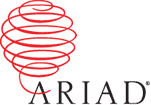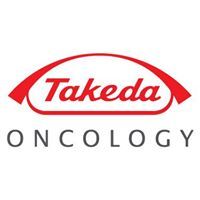预约演示
更新于:2025-05-07
Takeda Pharma SA
更新于:2025-05-07
概览
标签
免疫系统疾病
血液及淋巴系统疾病
肿瘤
小分子化药
ADC
单克隆抗体
疾病领域得分
一眼洞穿机构专注的疾病领域
暂无数据
技术平台
公司药物应用最多的技术
暂无数据
靶点
公司最常开发的靶点
暂无数据
| 排名前五的药物类型 | 数量 |
|---|---|
| 小分子化药 | 3 |
| ADC | 1 |
| 单克隆抗体 | 1 |
关联
5
项与 Takeda Pharma SA 相关的药物作用机制 ALK抑制剂 [+4] |
在研适应症 |
最高研发阶段批准上市 |
首次获批国家/地区 美国 |
首次获批日期2017-04-28 |
作用机制 蛋白酶体抑制剂 |
最高研发阶段批准上市 |
首次获批国家/地区 美国 |
首次获批日期2015-11-20 |
靶点 |
作用机制 α4β7拮抗剂 |
最高研发阶段批准上市 |
首次获批国家/地区 美国 |
首次获批日期2014-05-20 |
100 项与 Takeda Pharma SA 相关的临床结果
登录后查看更多信息
0 项与 Takeda Pharma SA 相关的专利(医药)
登录后查看更多信息
3
项与 Takeda Pharma SA 相关的文献(医药)2021-05-27·Journal of Crohn's and Colitis
P600 Real-world clinical characteristics and therapeutic strategies in patients with moderate-to-severe Inflammatory Bowel Disease in Argentina: Data from the RISE AR study
作者: Leonardi, D B ; Guimaraens, P N ; Brion, L ; El-Hakeh, J ; Lasa, J S ; Balderramo, D C ; Ruffinengo, O ; Zubiaurre, I ; Olivera Sendra, P ; Sambuelli, A ; Lubrano, P ; Correa, G J
2021-05-27·Journal of Crohn's and Colitis
P426 Health-Related Quality of Life and Work Productivity in patients with moderate-to-severe Inflammatory Bowel Disease in Argentina: Data from the RISE AR study
作者: Zubiaurre, I ; El-Hakeh, J ; Ruffinengo, O ; Guimaraens, P N ; Lubrano, P ; Yantorno, M ; Balderramo, D C ; Correa, G J ; Olivera Sendra, P ; Lasa, J S ; Sambuelli, A ; Leonardi, D B ; Brion, L
2020-12-01·American Journal of Gastroenterology1区 · 医学
P020 Incidence of Suboptimal Response to First-Line Anti-TNF Therapy in Patients with IBD in Argentina: Results from the EXPLORE Study
1区 · 医学
Article
作者: Ignacio, Zubiaurre ; Laura, Brion ; Daiana B, Leonardi ; Juan A, De Paula ; Julio, De Maria ; Olga, Fadeeva ; Domingo C, Balderramo ; Silvia C, Pedreira ; Patricia N, Guimaraens
100 项与 Takeda Pharma SA 相关的药物交易
登录后查看更多信息
100 项与 Takeda Pharma SA 相关的转化医学
登录后查看更多信息
组织架构
使用我们的机构树数据加速您的研究。
登录
或

管线布局
2026年01月08日管线快照
管线布局中药物为当前组织机构及其子机构作为药物机构进行统计,早期临床1期并入临床1期,临床1/2期并入临床2期,临床2/3期并入临床3期
批准上市
5
登录后查看更多信息
当前项目
| 药物(靶点) | 适应症 | 全球最高研发状态 |
|---|---|---|
维布妥昔单抗 ( CD30 x Tubulin ) | 原发性皮肤间变性大细胞淋巴瘤 更多 | 批准上市 |
阿齐沙坦酯钾盐 ( AT1R ) | 原发性高血压 更多 | 批准上市 |
枸橼酸伊沙佐米 ( Proteasome ) | 多发性骨髓瘤 更多 | 批准上市 |
维得利珠单抗 ( α4β7 ) | 溃疡性结肠炎 更多 | 批准上市 |
布格替尼 ( ALK x EGFR x FLT3 x IGF-1R x ROS1 ) | ALK阳性非小细胞肺癌 更多 | 批准上市 |
登录后查看更多信息
药物交易
使用我们的药物交易数据加速您的研究。
登录
或

转化医学
使用我们的转化医学数据加速您的研究。
登录
或

营收
使用 Synapse 探索超过 36 万个组织的财务状况。
登录
或

科研基金(NIH)
访问超过 200 万项资助和基金信息,以提升您的研究之旅。
登录
或

投资
深入了解从初创企业到成熟企业的最新公司投资动态。
登录
或

融资
发掘融资趋势以验证和推进您的投资机会。
登录
或

生物医药百科问答
全新生物医药AI Agent 覆盖科研全链路,让突破性发现快人一步
立即开始免费试用!
智慧芽新药情报库是智慧芽专为生命科学人士构建的基于AI的创新药情报平台,助您全方位提升您的研发与决策效率。
立即开始数据试用!
智慧芽新药库数据也通过智慧芽数据服务平台,以API或者数据包形式对外开放,助您更加充分利用智慧芽新药情报信息。
生物序列数据库
生物药研发创新
免费使用
化学结构数据库
小分子化药研发创新
免费使用


